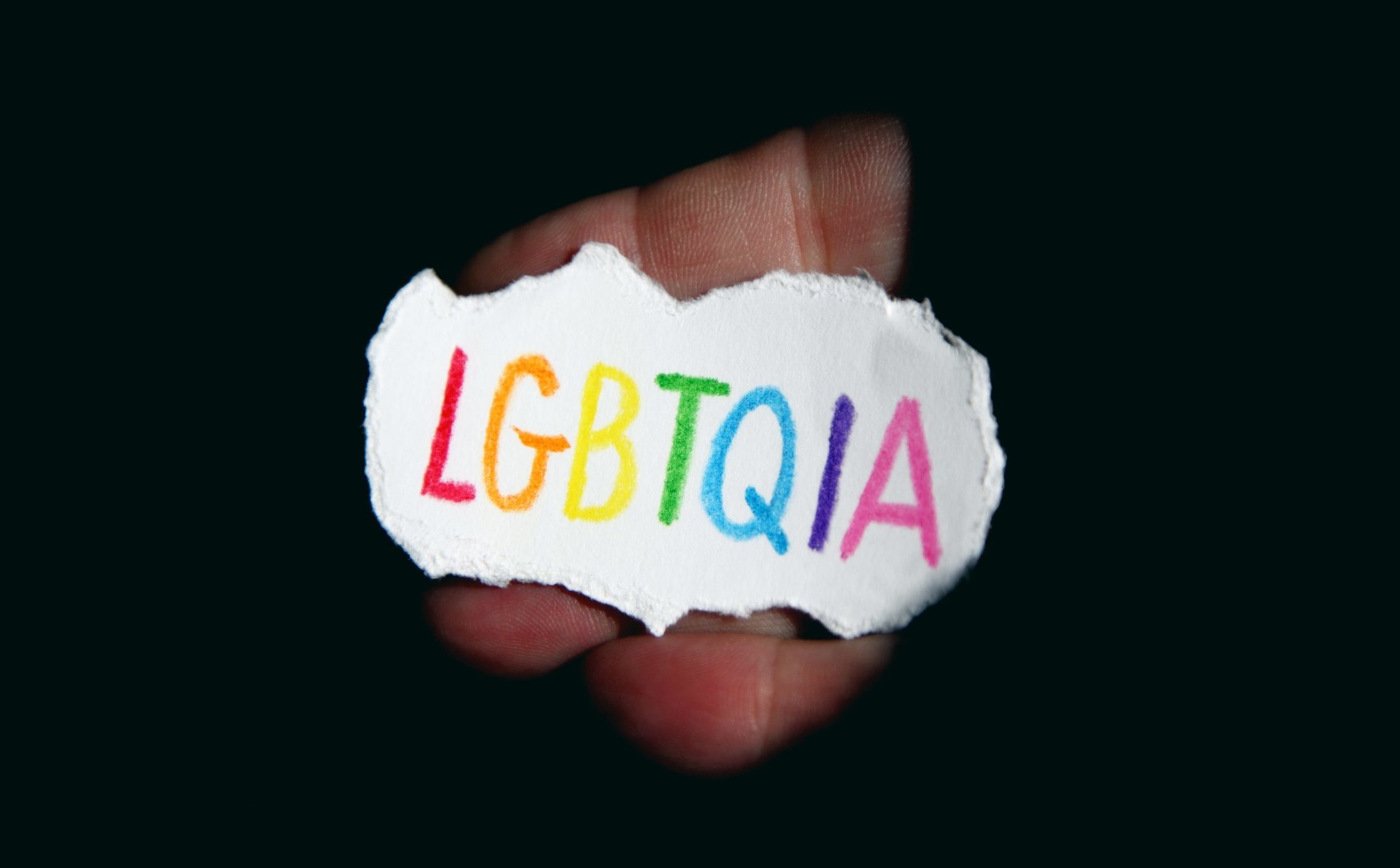Growing up, I thought I was “normal.” Whatever that means.
Basically, I thought I was a heterosexual cisgender female.
My parents discouraged dating until I was serious about it potentially resulting in marriage. I had no desire for marriage; therefore, I did not see the point in dating. Oftentimes, my friends tried to pressure me and my male friends to confess that we had feelings for one another; and over time, I started to believe that I actually did. I believed that I wanted to grow up, fall in love with one of these boys, and get married. That’s what happened in the movies, so I thought it was real.
Most of the time, kids think dating and kissing are gross; but by the time puberty hits, everyone seems to only care about dating, having their first kiss, or losing their virginity. Well, the opposite thing happened to me. When I was a teenager, I realized I didn’t care about boys as much as the girls around me did. However, I also did not care about the girls.
While I started to realize not just an indifference but almost a repulsion towards intimacy, my friends were letting their hormones get the best of them.
My guy friends would attempt to find any socially-acceptable way to get close to me; whether it was through hugging or casually brushing up against me. I avoided this as much as I could and vocally expressed my discomfort. Many told me that I would have to get used to it if I was ever going to get married. I insisted that that was not going to be a problem because I did not want to get married. Their response? You’ll change your mind.
After conversations with people who were convinced that no man could survive being a virgin, I was provoked to research well-known, accomplished individuals who were known to practice celibacy. This led me to discover another term: asexual or “ace.”
In my research, I found persons throughout history who may not have necessarily practiced celibacy for religious reasons as many believe. Instead, they were asexuals; persons who either have complete lack of interest in sex or are even disgusted by it. To put it simply, sex turns you off instead of on. Finding a term to identify what I had been feeling and also realizing that there were other people like me just made me feel not alone.
Still, when I was realizing my sexual identity or… lack of it,
asexuality was often cast aside.
Although the term “LGBT” has always been representative of a diverse and inclusive community; it still made a lot of people, like me, feel excluded. Eventually, Q was added to sort of please everyone as it represented “queer” or “questioning”. However, “I” (intersex) and “A” (asexual) have since been added along with a plus sign to represent more sexualities and gender identities. Even then, many believe the “A” is for ally, an advocate for a group other than their own.
Asexual – A broad spectrum of sexual orientations generally characterized by feeling varying degrees of sexual attraction or a desires for partnered sexuality. Asexuality is distinct from celibacy, which is the deliberate abstention from sexual activity, despite sexual desire. Some asexual people do have sex and do experience varying levels of sexual attraction. (LGBTQIA Resource Center)
With the L.G.B.T.Q.I.A.+ community continuing to grow, it’s important that we all recognize and understand each other’s identities. According to the LGBTQIA Resource Center, here is an abbreviated glossary:
- Androgyne – A person with a gender that is both masculine and feminine or in between masculine and feminine.
- Aromantic – A romantic orientation generally characterized by not feeling romantic attraction or a desire for romance. Aromantic people can be satisfied by friendship and other non-romantic relationships. Many aromantic people also identify with a sexual orientation, such as asexual, bisexual, etc.
- Bisexual – A person whose primary sexual and affectional orientation is toward people of the same and other genders, or towards people regardless of their gender. Some people may use bisexual and pansexual interchangeably.
- Cisgender – A gender identity, or performance in a gender role, that society deems to match the person’s assigned sex at birth. The prefix cis- means “on this side of” or “not across”. A term used to highlight the privilege of people who are not transgender.
- Demisexual – A sexual orientation in which someone feels sexual attraction only to people with whom they have an emotional bond. Most demisexuals feel sexual attraction rarely compared to the general population; and some have little to no interest in sexual activity. Demisexuals are considered to be on the asexual spectrum.
- Gay – A sexual and affectional orientation toward people of the same gender.
- Gender Fluid/Genderfluid – A person whose gender identification and presentation shifts, whether within or outside of societal, gender-based expectations. Being fluid in motion between two or more genders.
- Gender Non-conforming (GNC) – Adjective for people who do not subscribe to societal expectations of typical gender expressions or roles. The term is more commonly used to refer to gender expression (how one behaves, acts, and presents themselves to others) as opposed to gender identity (one’s internal sense of self).
- Heteronormativity – Attitudes and behaviors that incorrectly assume gender is binary, ignoring genders besides women and men; and that people should and will align with conventional expectations of society for gender identity, gender expression, and sexual and romantic attraction.
- Intersex – An umbrella term to describe a wide range of natural body variations that do not fit neatly into conventional definitions of male or female. Intersex variations may include, but are not limited to, variations in chromosome compositions, hormone concentrations, and external and internal characteristics.
- Lesbian – Usually, a woman whose primary sexual and affectional orientation is toward people of the same gender. However, some nonbinary people also identify as lesbians, often because they have some connection to womanhood and are primarily attracted to women. (See nonbinary below)
- Nonbinary – A gender identity and experience that embraces a full universe of expressions and ways of being that resonate for an individual; moving beyond the male/female gender binary. It may be an active resistance to binary gender expectations and/or an intentional creation of new unbounded ideas of self within the world.
- Pansexual, Omnisexual – Terms used to describe people who have romantic, sexual or affectional desire for people of all genders and sexes. Has some overlap with bisexuality and polysexuality (not to be confused with polyamory).
- Polysexual – People who have romantic, sexual, or affectional desire for more than one gender. Not to be confused with polyamory. Has some overlap with bisexuality and pansexuality.
- Queer – One definition of queer is abnormal or strange. Historically, queer has been used as an epithet/slur against people whose gender, gender expression and/or sexuality do not conform to dominant expectations…Not all people who identify as LGBTQIA use “queer” to describe themselves. The term is often considered hateful when used by those who do not identify as LGBTQIA.
- Questioning – The process of exploring one’s own gender identity, gender expression, and/or sexual orientation. Some people may also use this term to name their identity within the LGBTQIA community.
- Transgender – An adjective used most often as an umbrella term and frequently abbreviated to “trans”. Identifying as transgender, or trans, means that one’s internal knowledge of gender is different from conventional or cultural expectations based on the sex that person was assigned at birth.
Nonetheless, asexuality is still misunderstood and underrepresented among other sexual orientations and identities. Asexuals are such a small percentage in the LGBTQIA+ community (about 1% of the population) that they are often overlooked. Many people, both heterosexuals and even those in the LGBTQIA+ community, do not believe asexual is legitimate. It’s difficult for those who experience sexual attraction to believe that others can live without sex. Or may not even want it at all.

The CW Network is a proponent of LGBTQIA+ representation in their TV shows. Riverdale features characters who are gay, lesbian, and bisexual. Despite Jughead Jones being asexual in Archie Comics, it appears that the show’s creators have decided to ignore this aspect of the character. Hopefully, Jughead can come to discover his asexuality later. Cole Sprouse, who plays Jughead, and show creator Roberto Aguirre-Sacasa have both hinted that the character may eventually discover it. If so, it would be long-overdue ace representation for TV. Because Jughead has a girlfriend on the show, it could also prove to be an interesting and moving storyline as it deals with the fact that you can be asexual and still love someone.
Continuing to see lots of positive representation in entertainment for the rest of the community, but not asexual, is just another reminder that there is still more work to do before we are accepted even among our friends.
One thing I really love about my asexuality is that it allows me to be a better friend to my friends who are also in the community. I believe that if I were not asexual, I could not have true empathy for those who share with me not just the joys but also the struggles and hardships of being “different”. Although this community is diverse, we have similar experiences that allow us to understand and relate to one another better. While I’m still learning how to accept and love myself, this exploration has definitely helped me be able to love more sincerely.
Cover Image by Sharon McCutcheon

